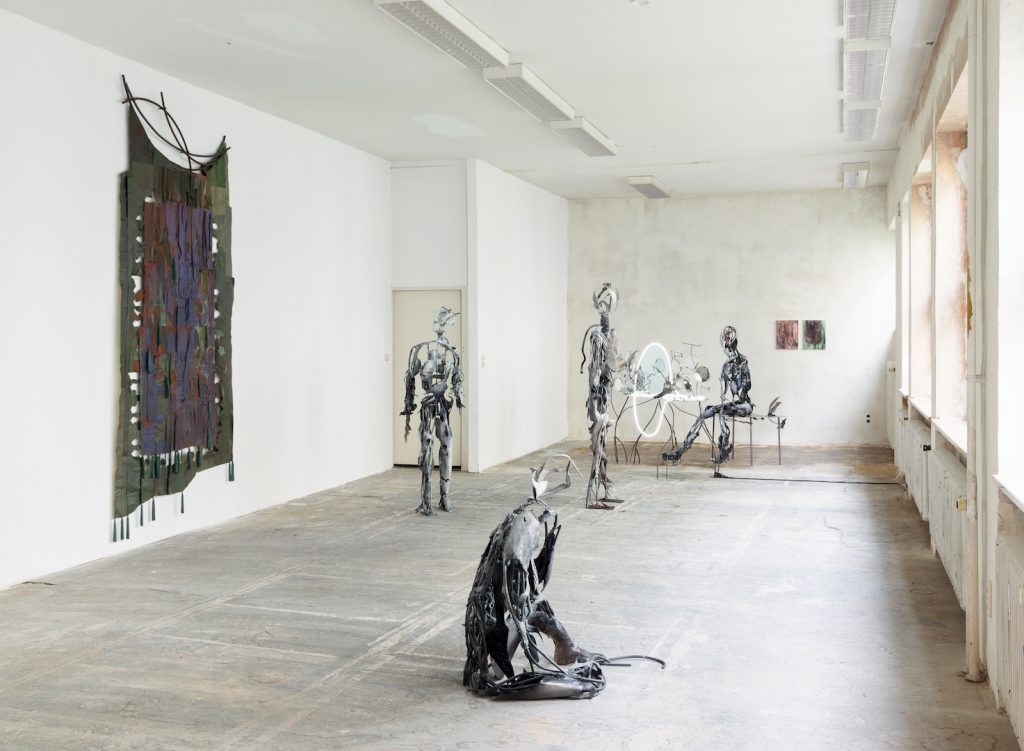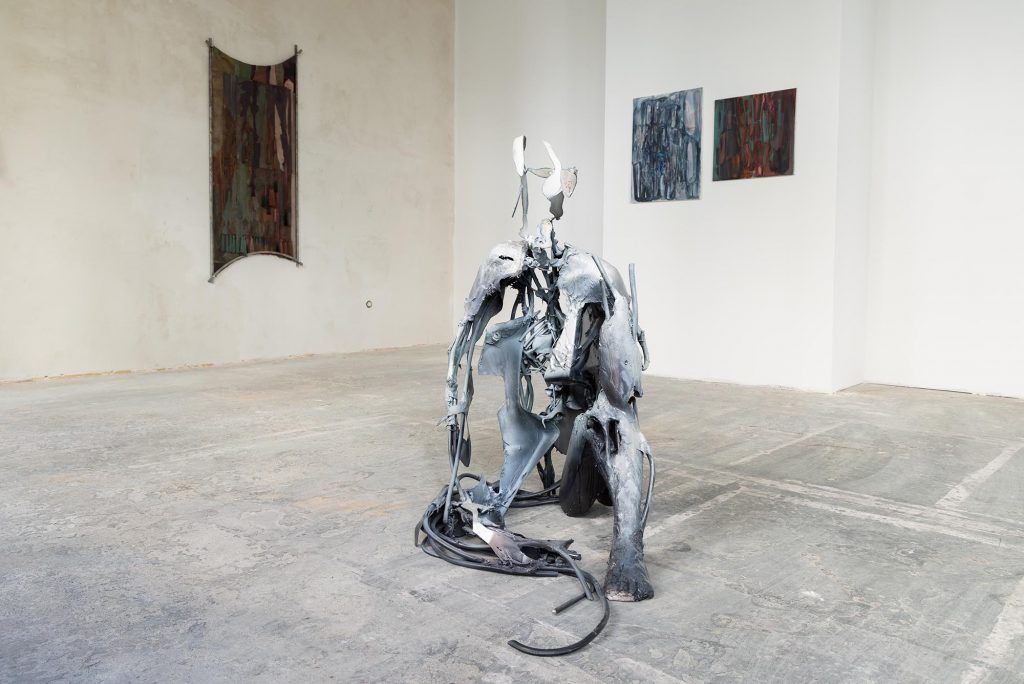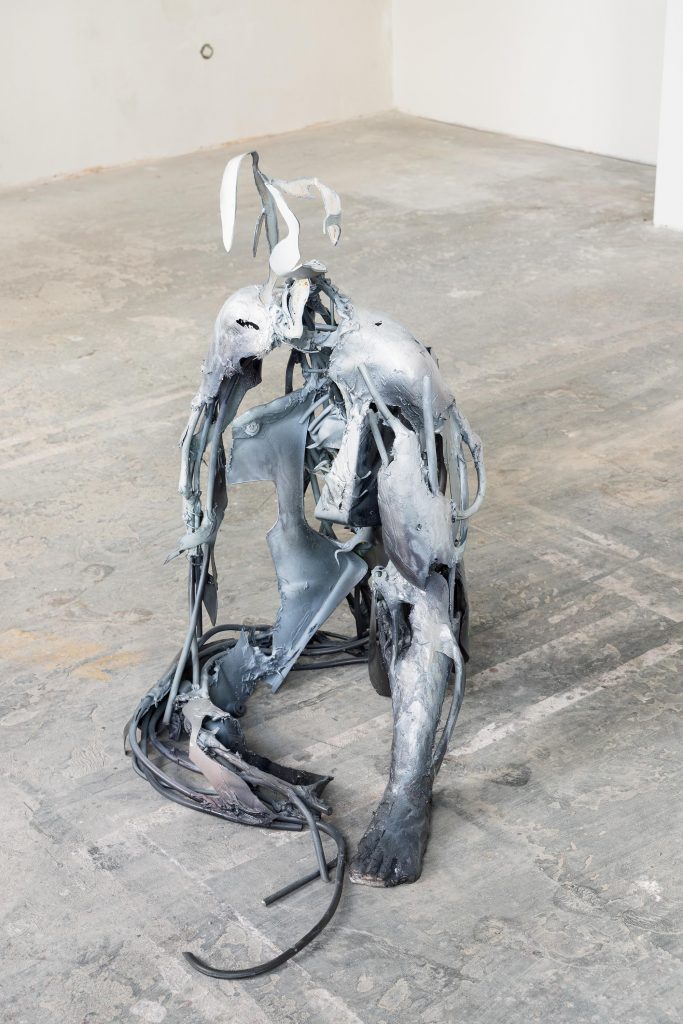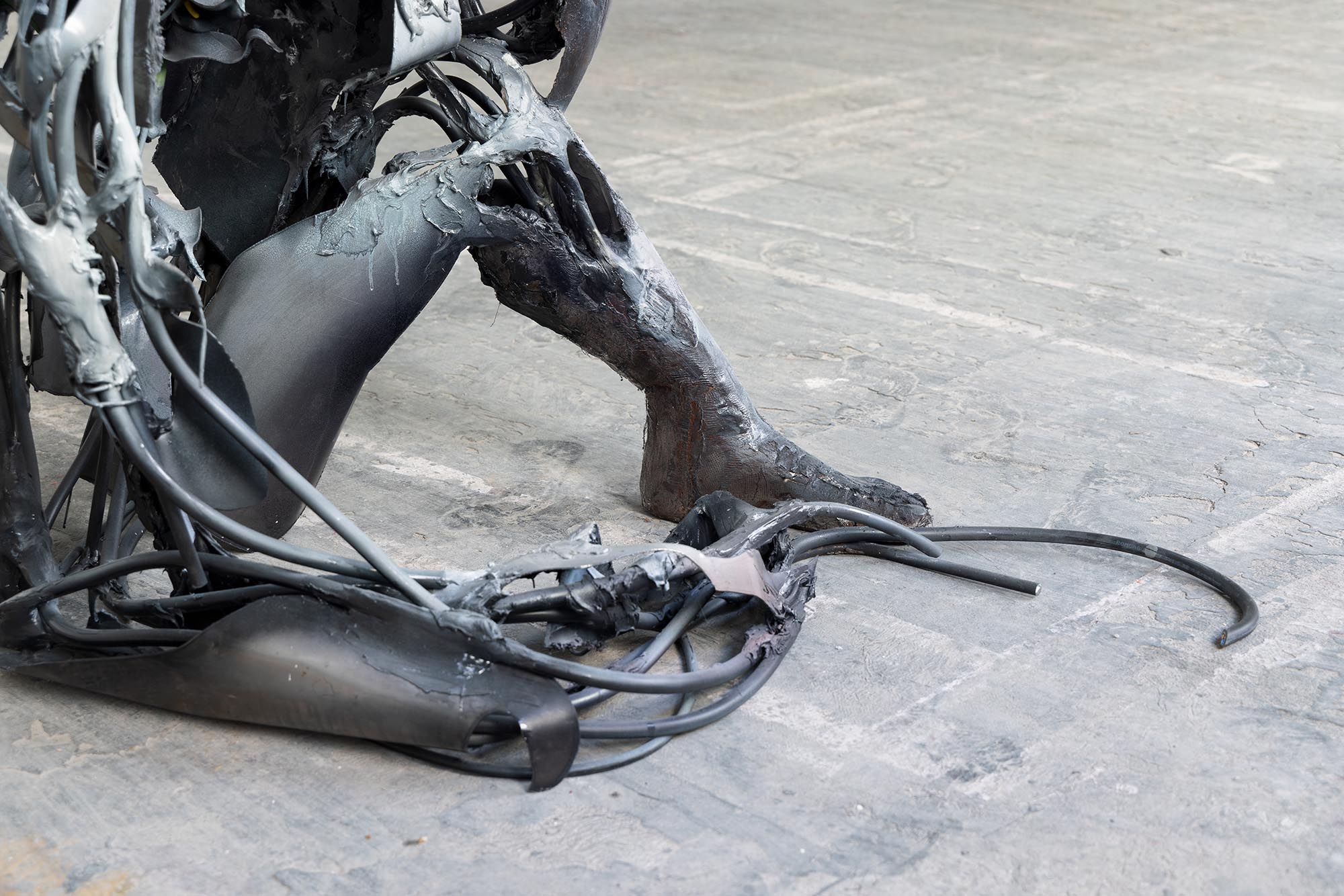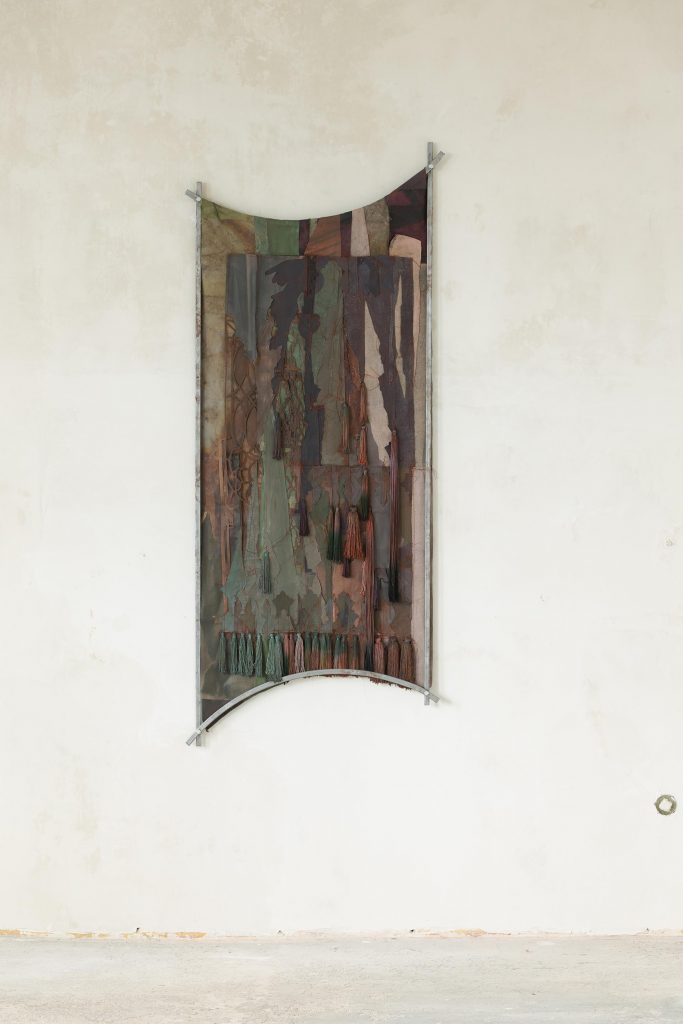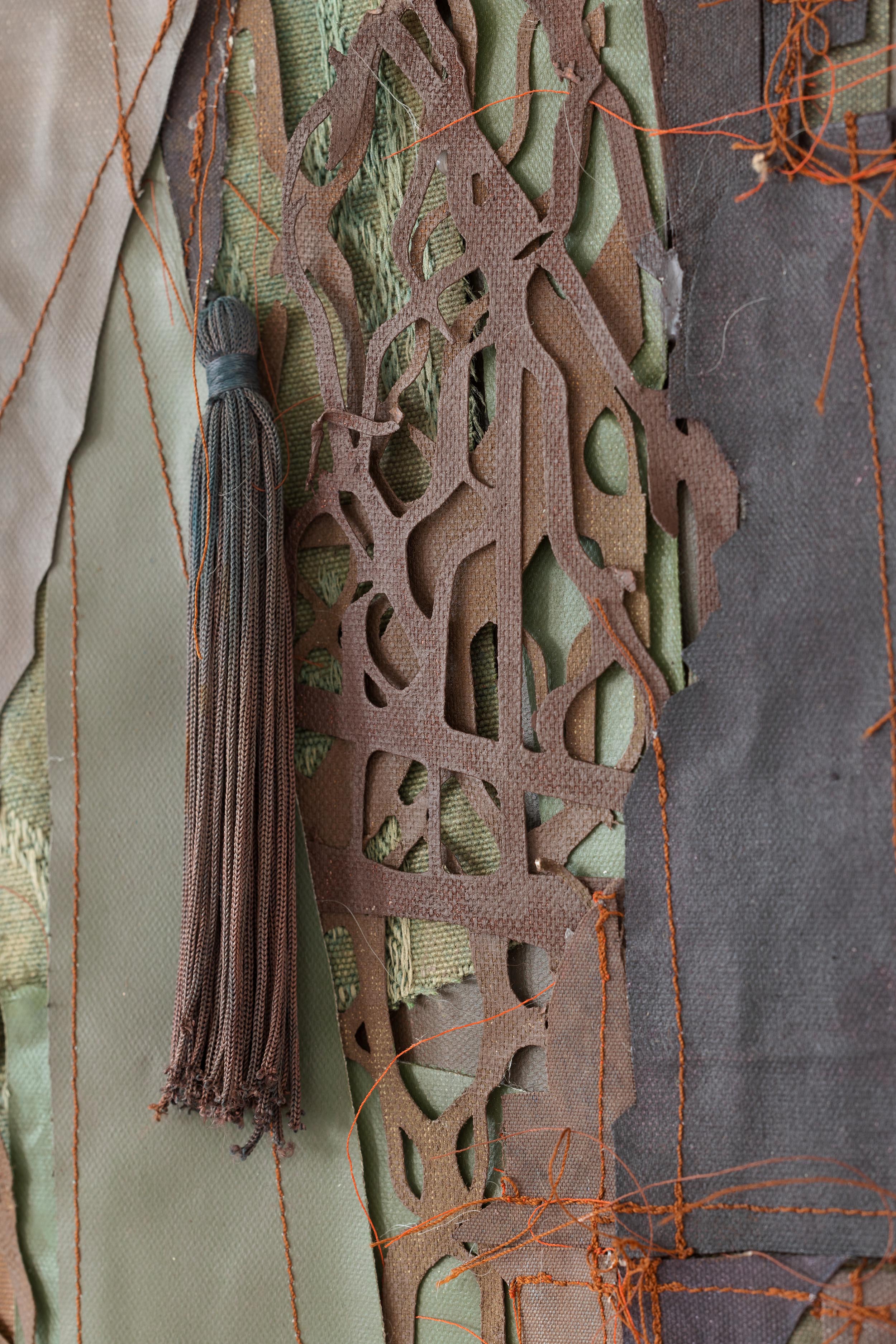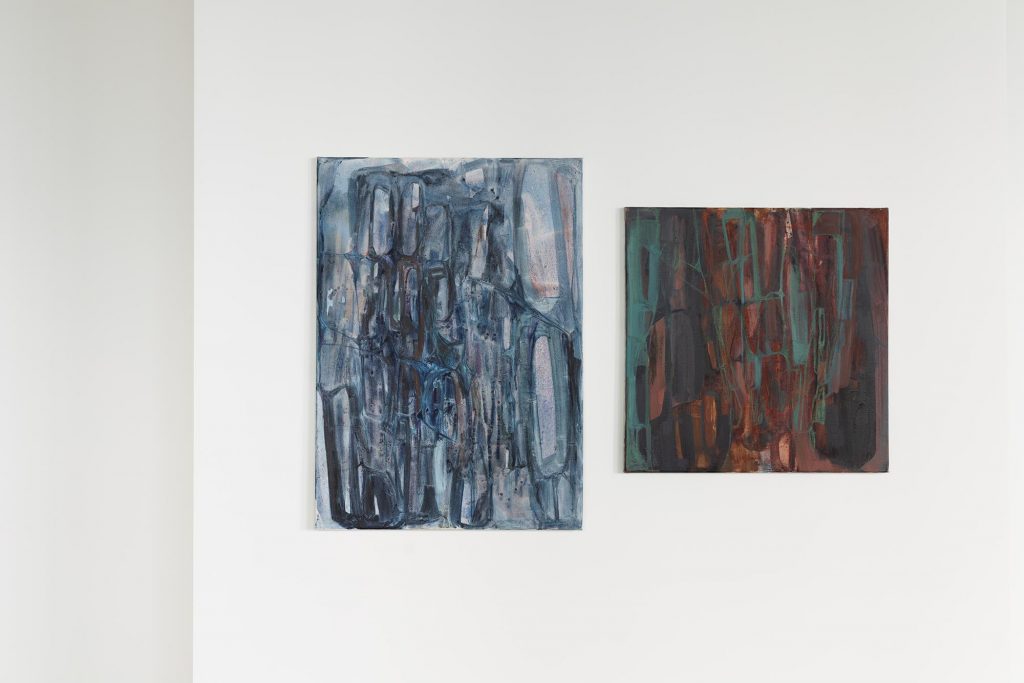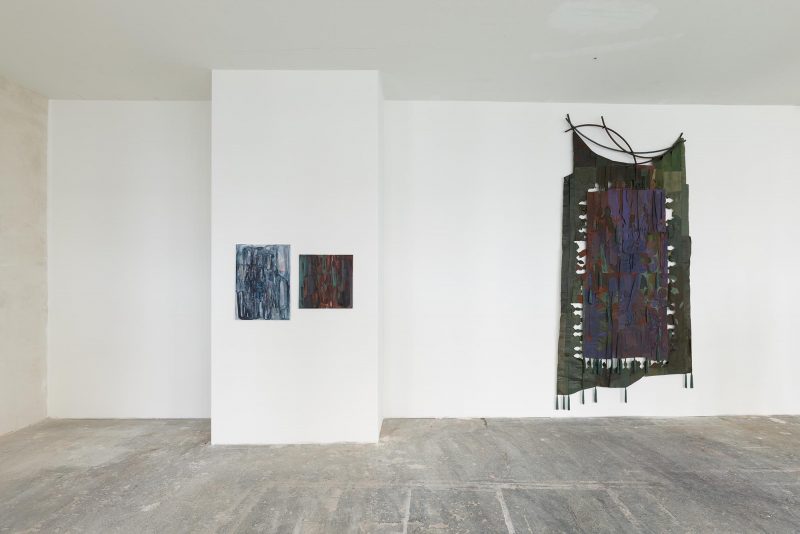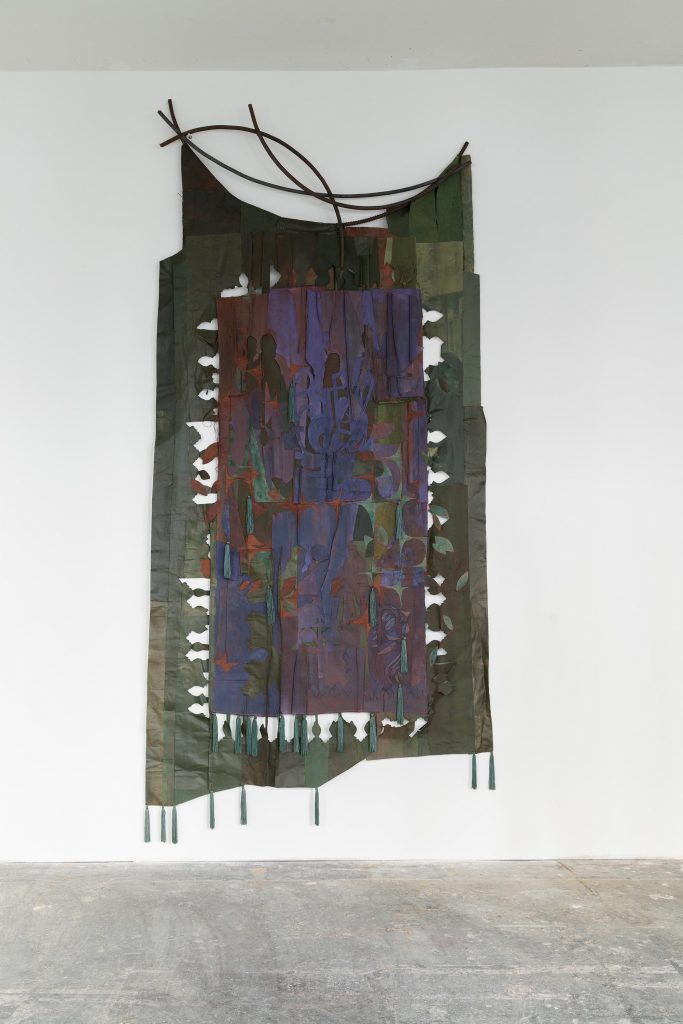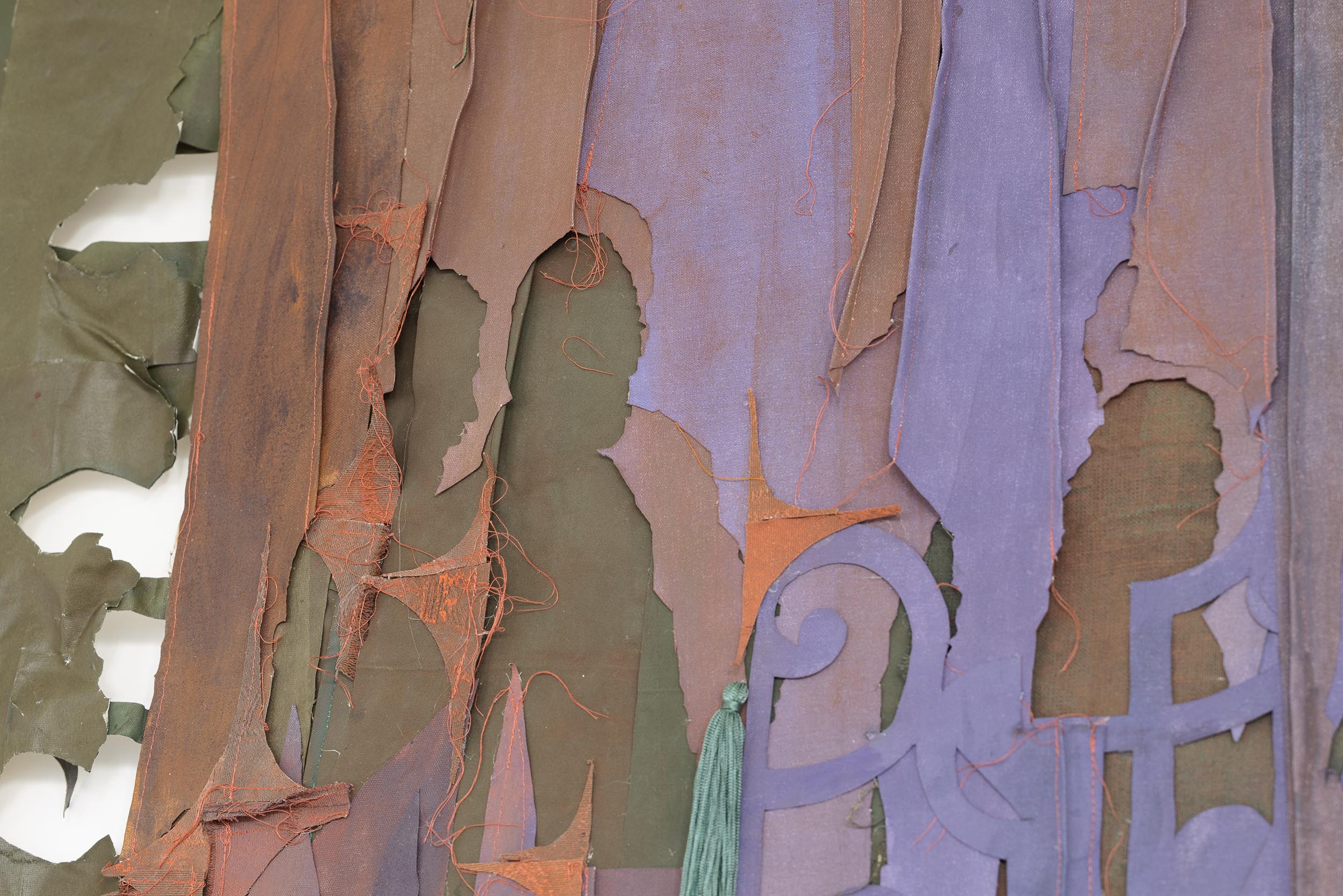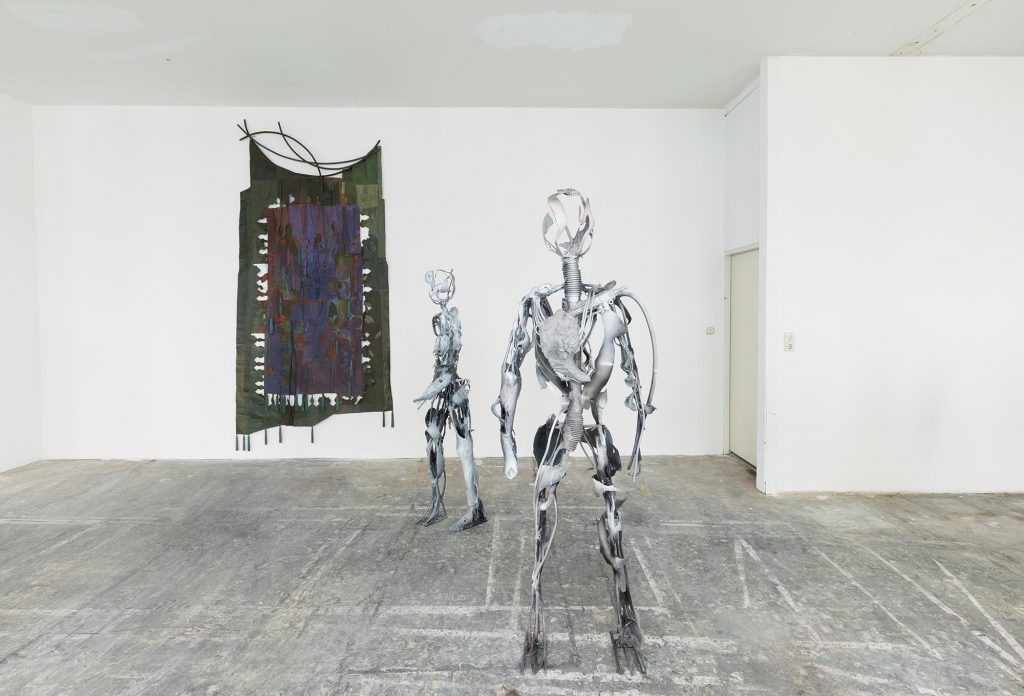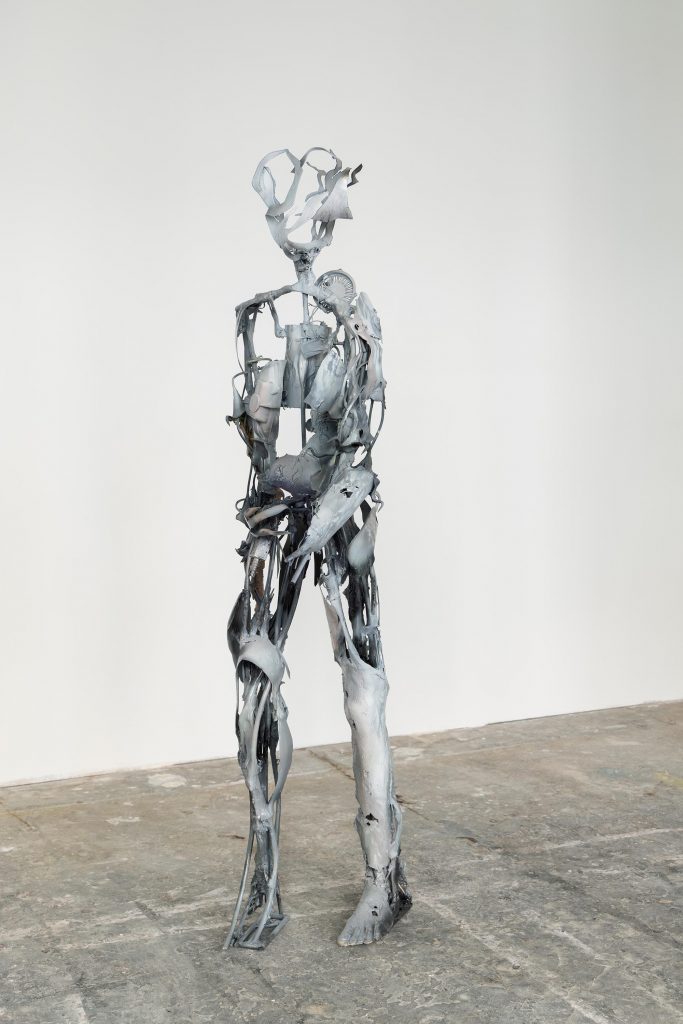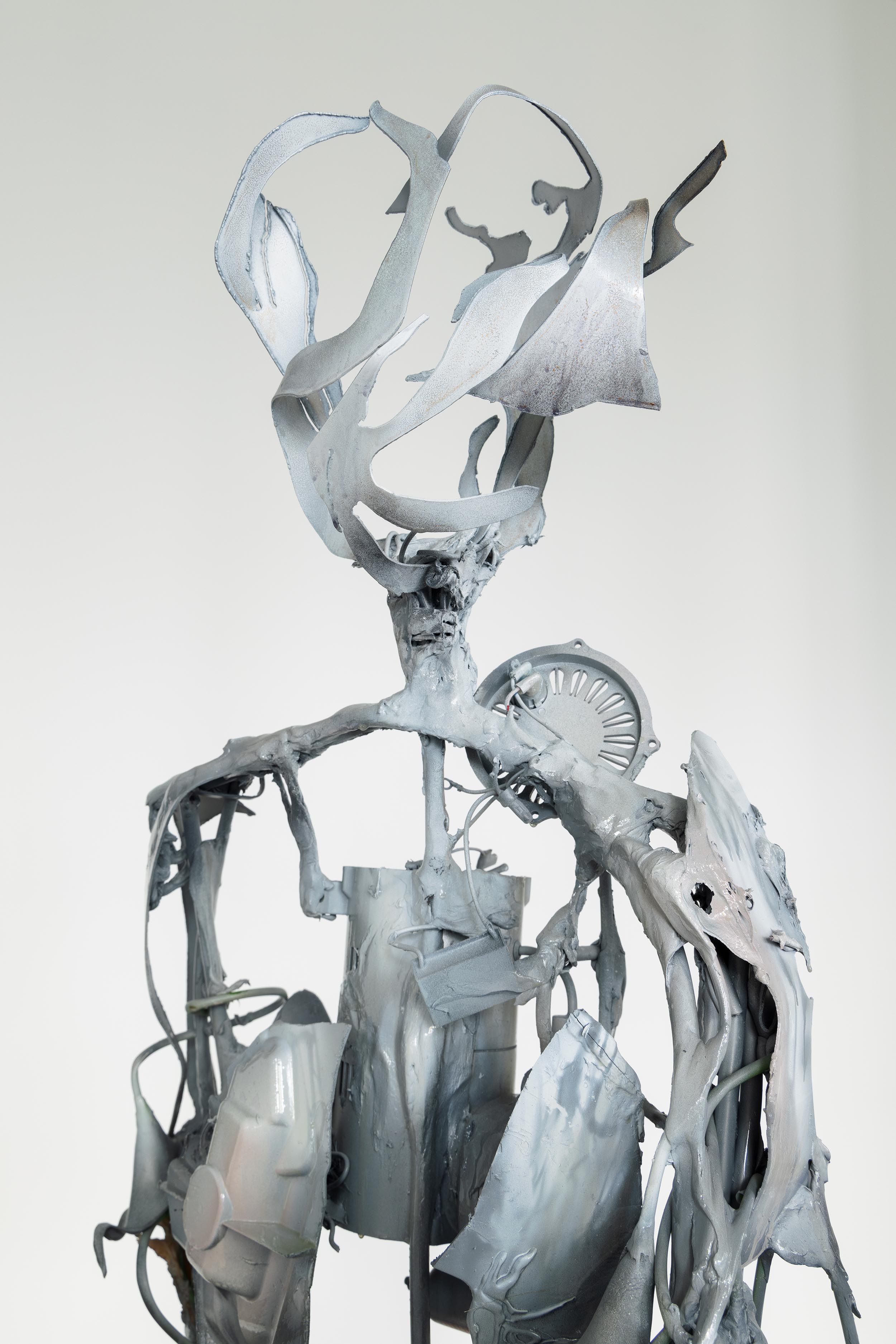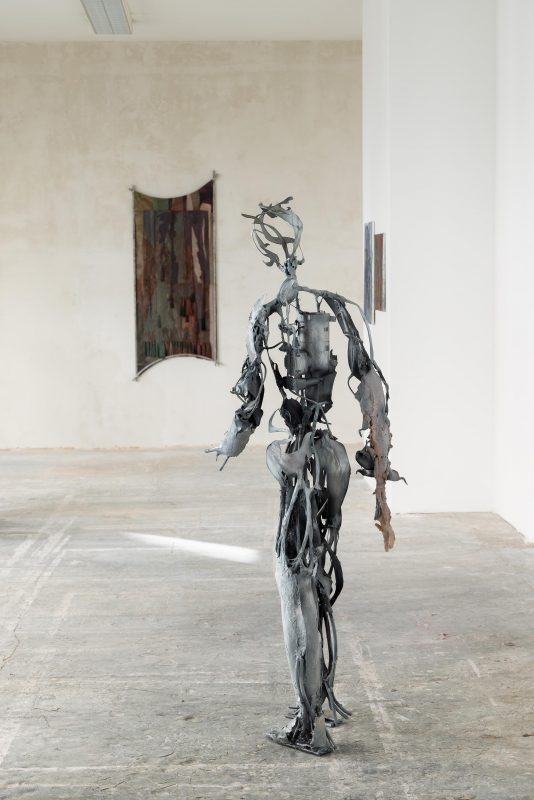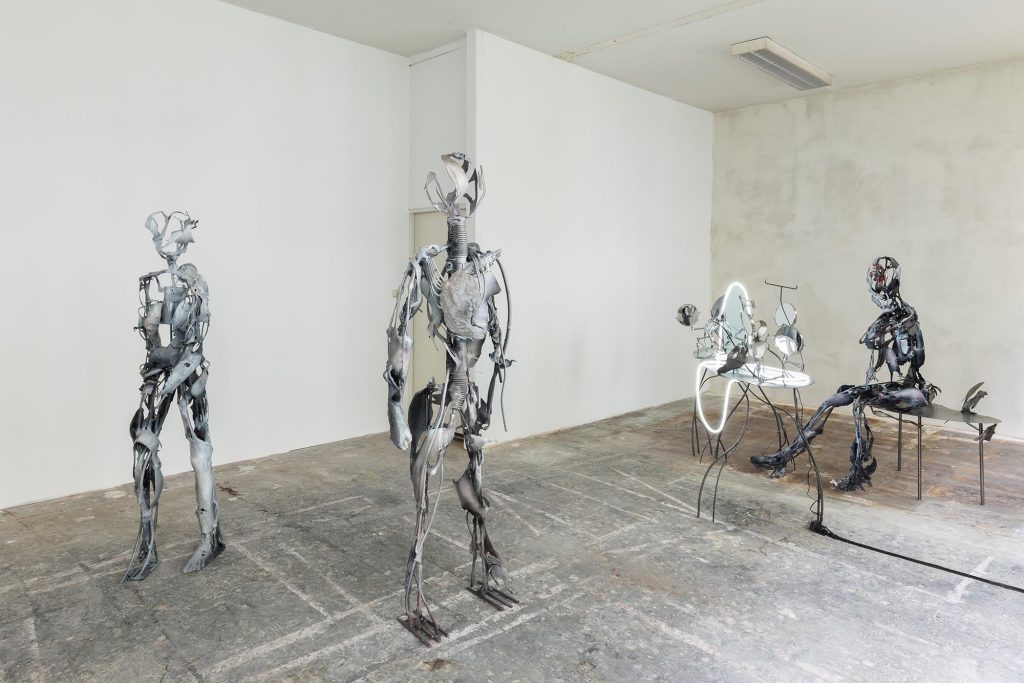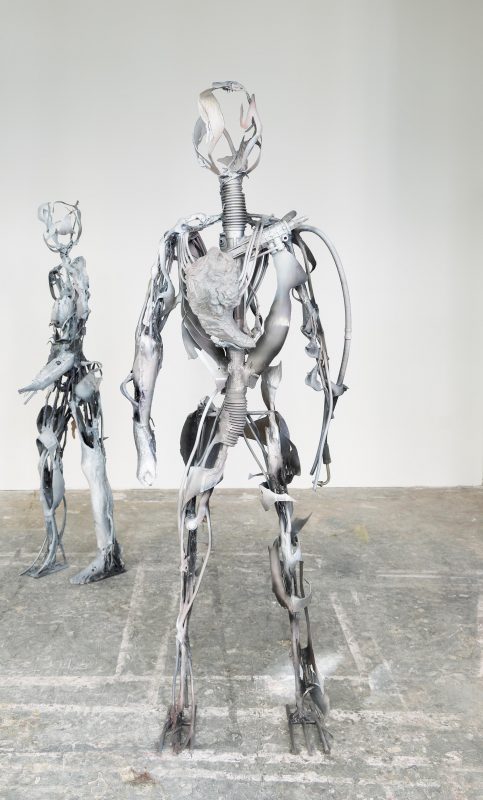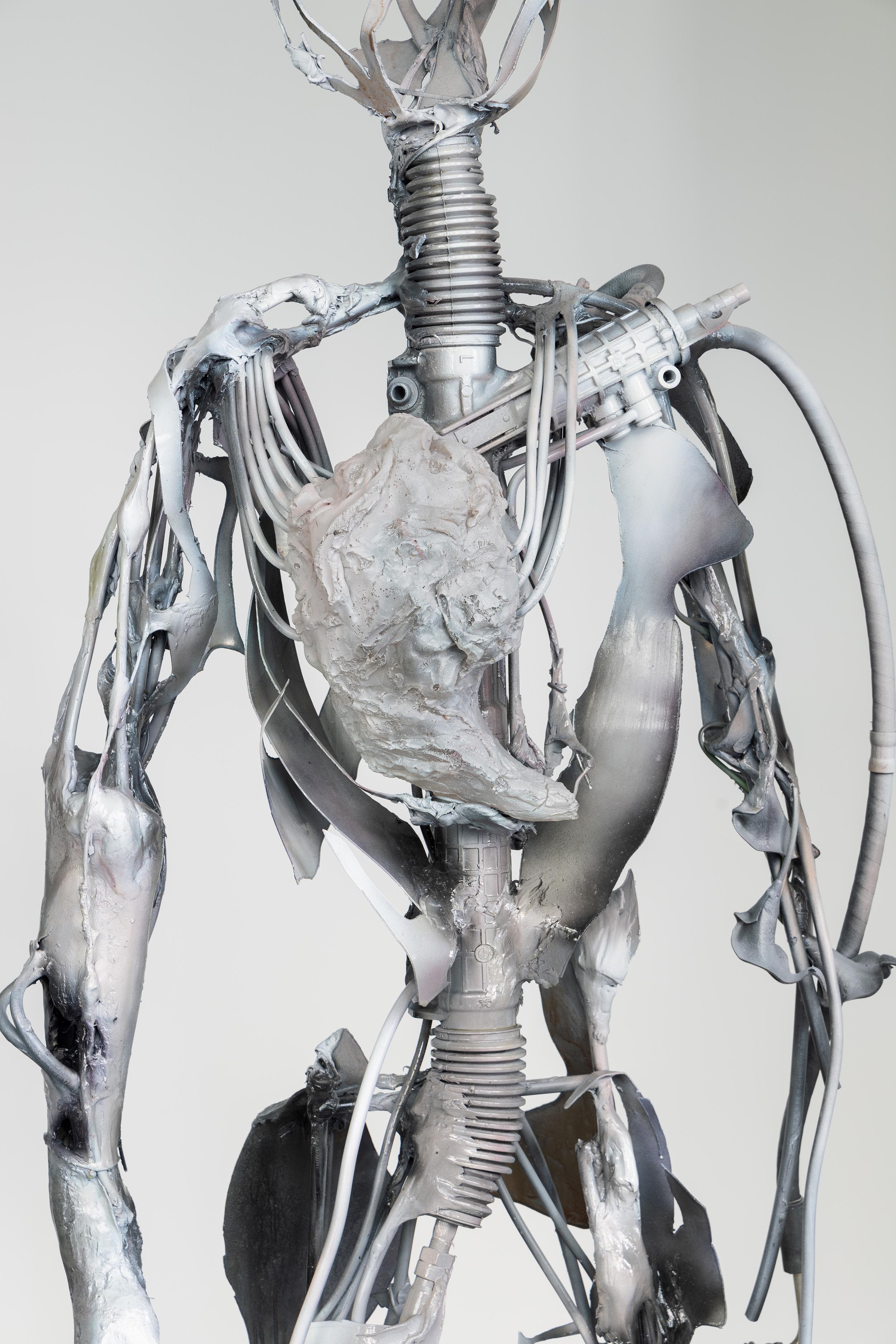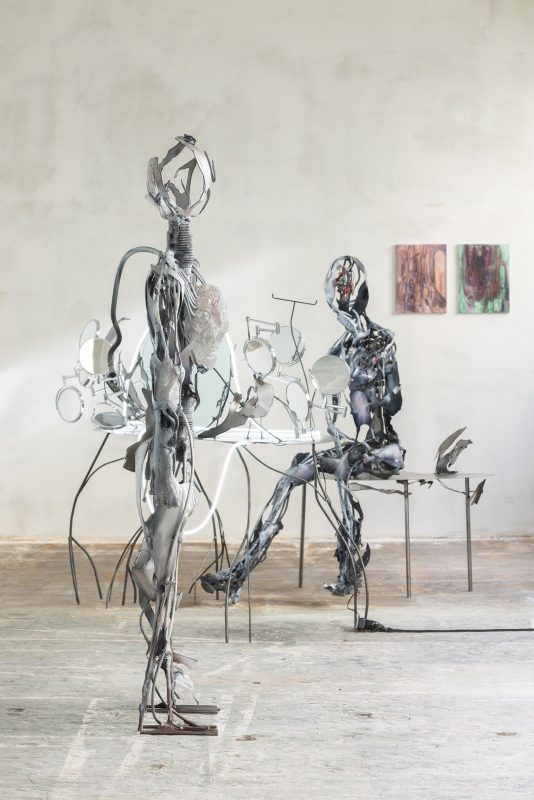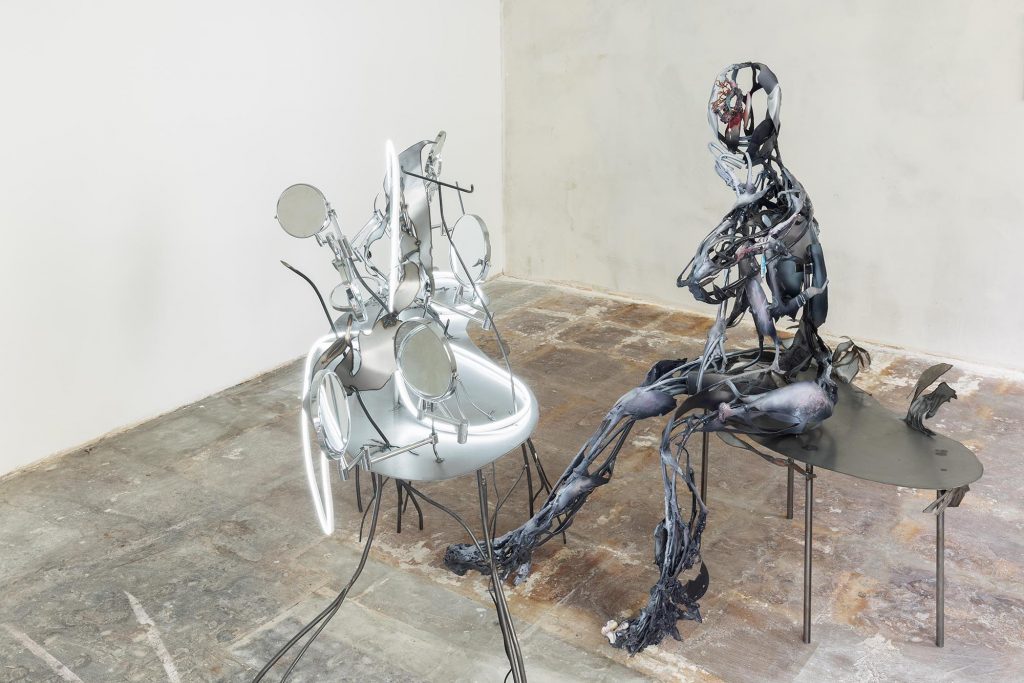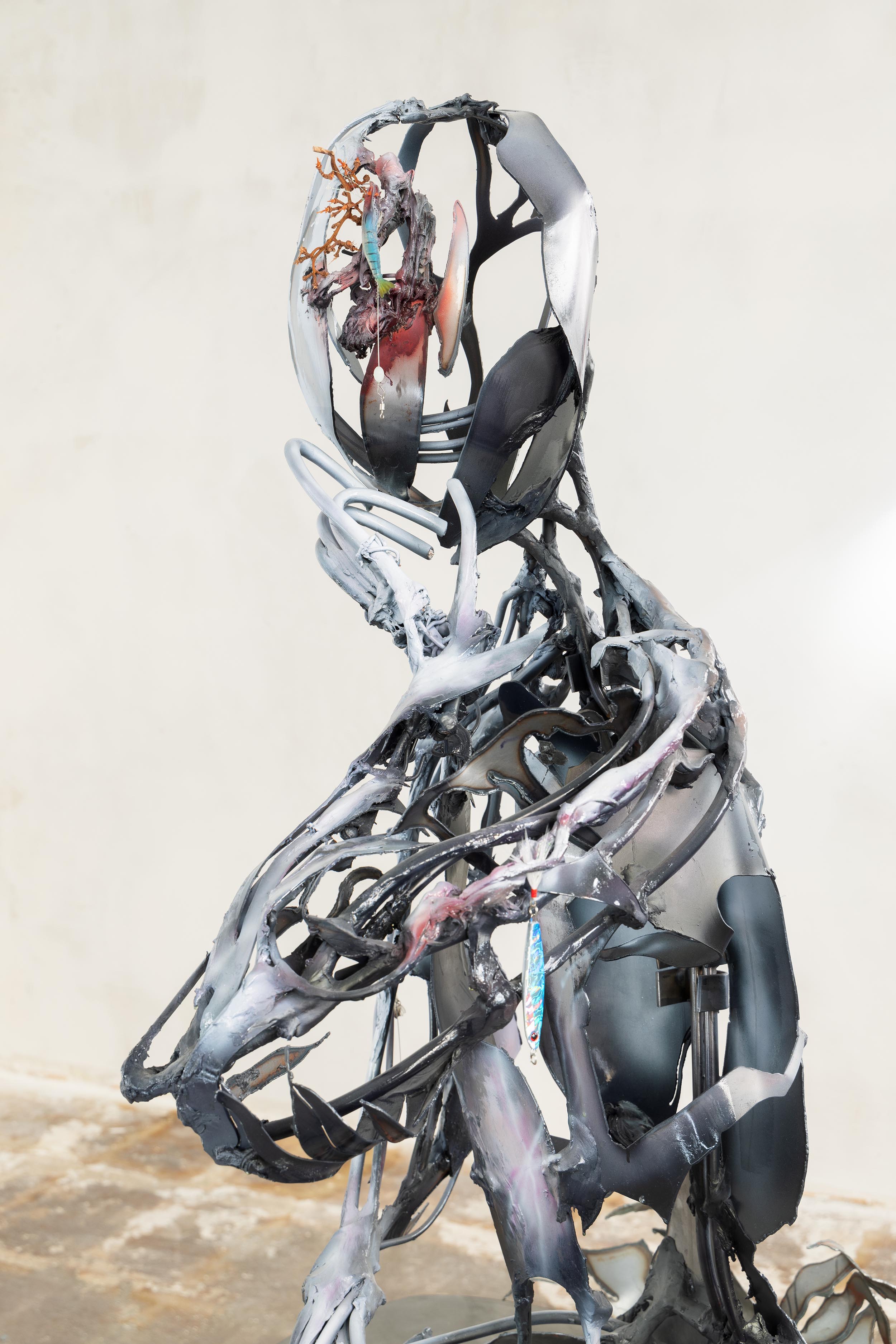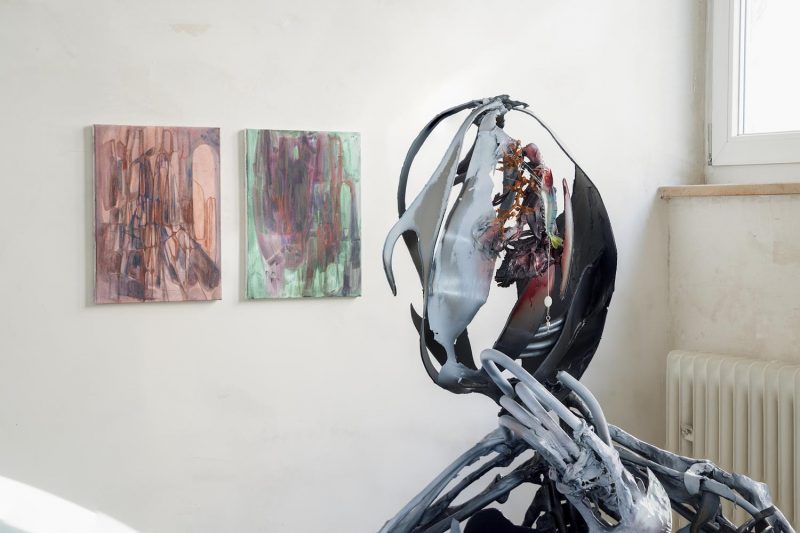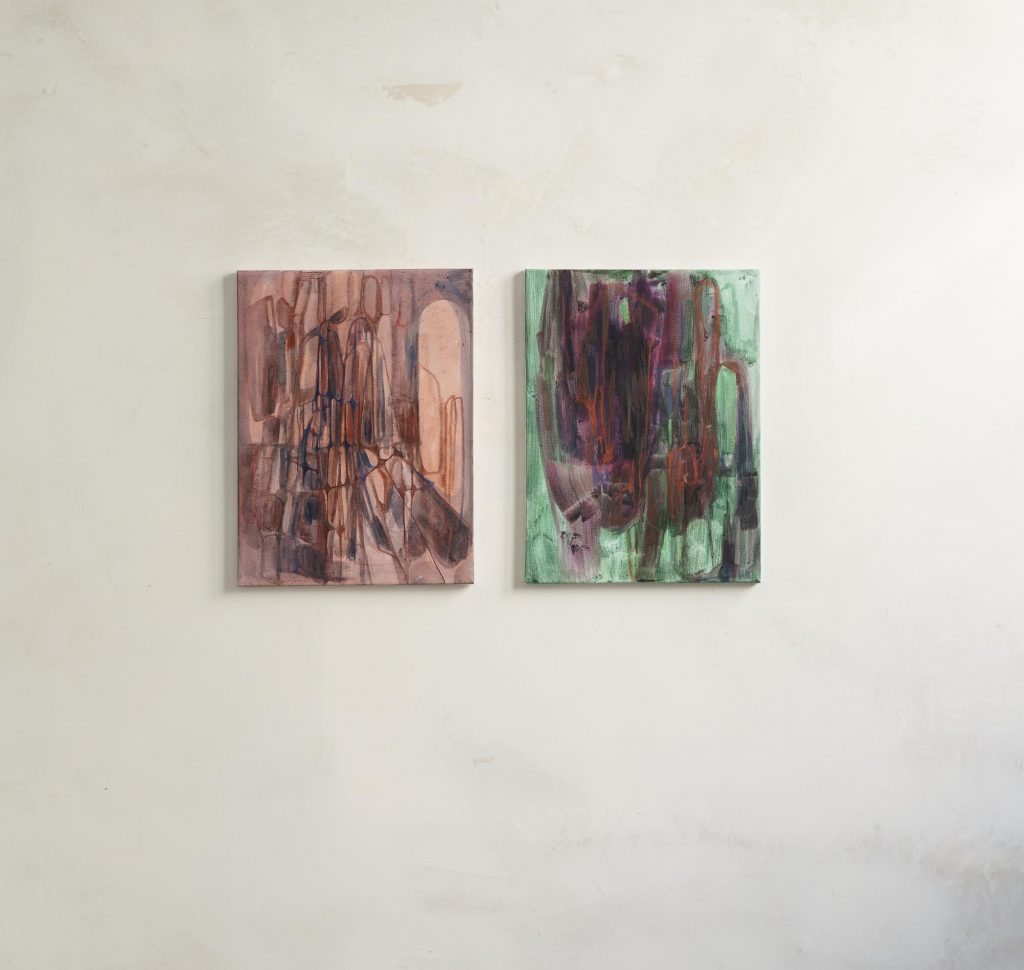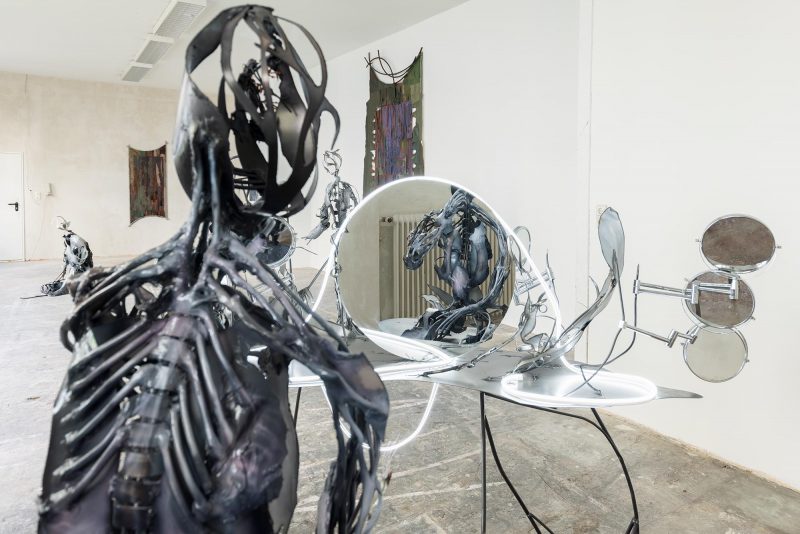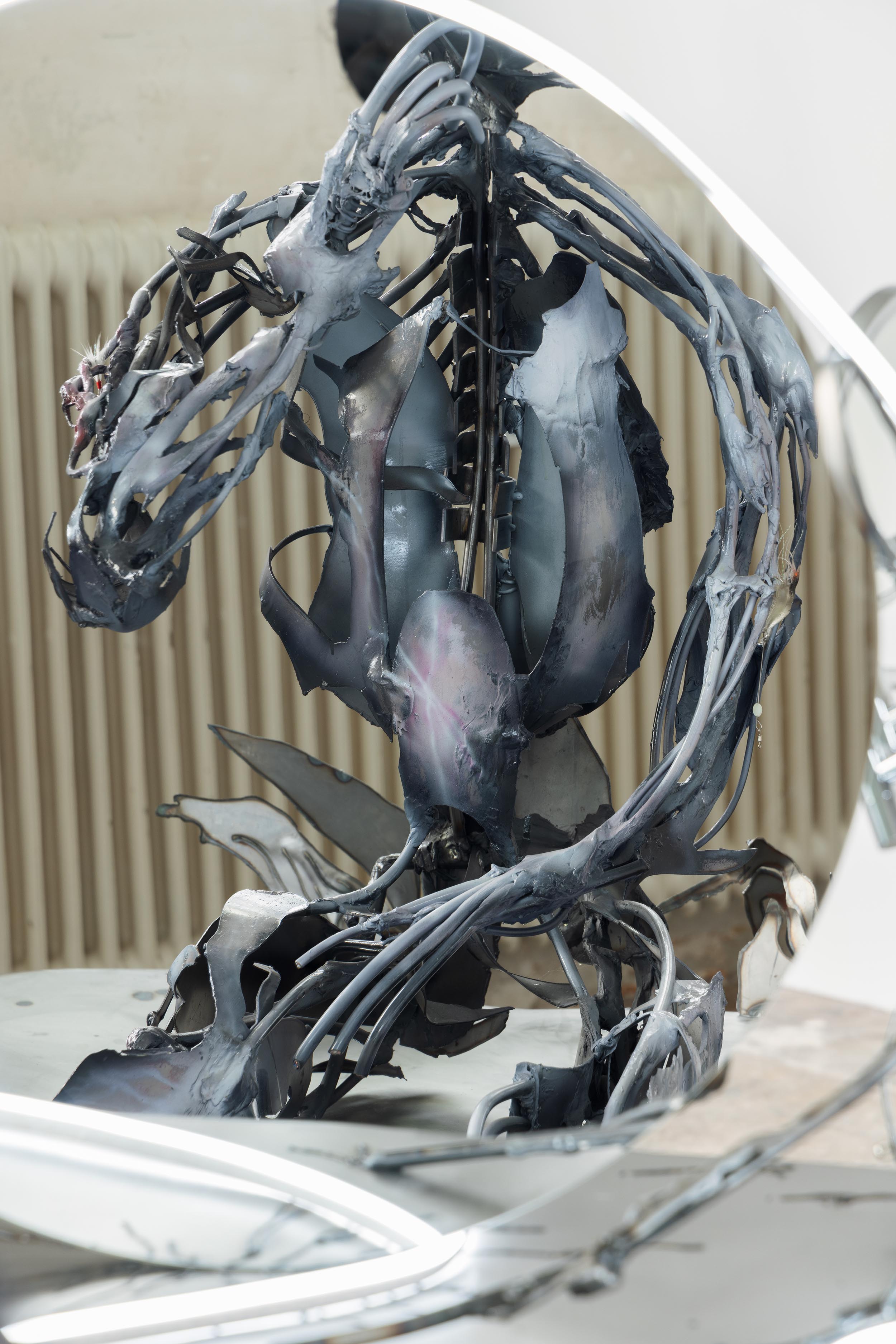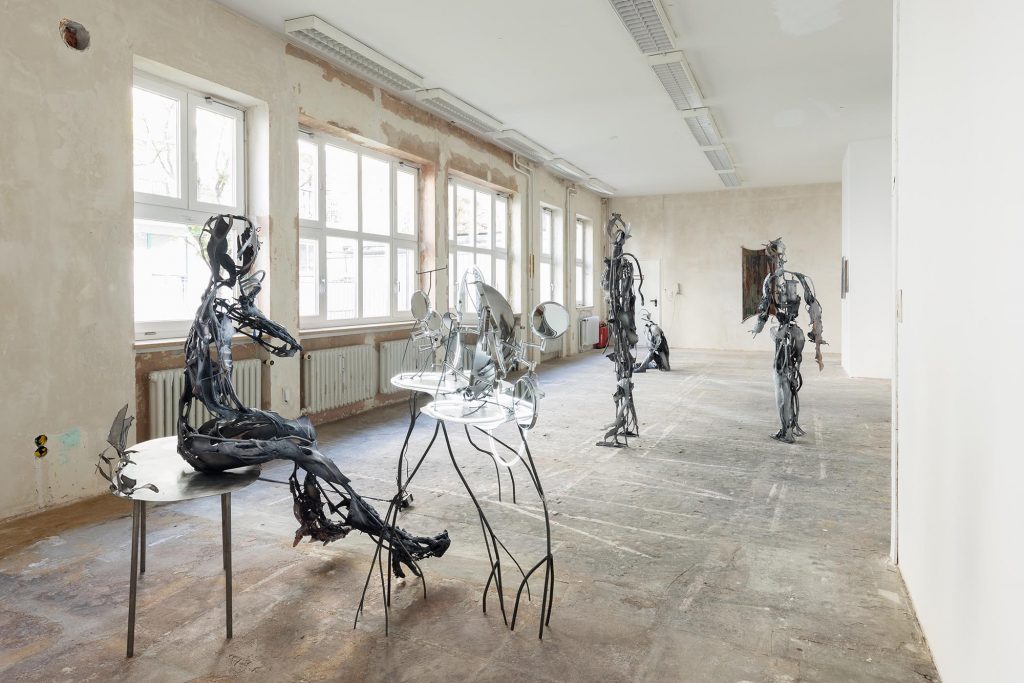ENG
However different the artistic practices of Yein Lee and Nour Jaouda may seem, their approaches nevertheless overlap in their conceptual and material use of overlayering, fraying and combination. Found materials, textiles and objects – and their respective cultural meanings, histories and associations – are dismembered, recombined and brought together in new dialogues. The interweaving and layering of these materials, along with the agency assigned to them, thus create forms and scenes able to construct their own particular narrative structure. The sculptures by Yein Lee shown here revolve around the human body as signifier.
She combines single casts of isolated body parts – her own or those of her friends – with forms made of steel, epoxy and acrylic resins, latex, and electronic cables, as well as used steering wheels and motorcycle parts. The (larger than) life-size anthropomorphic figures that emerge, made from dark, synthetic materials, contorted bodywork elements and electronic scrap, disclose glimpses of internal cavities devoid of organs. These entities are all in full agreement that the physical boundaries between natural and artificial, between grown and fabricated, and between human and non-human have long since been overcome. The willful (technological) worlds of objects and environments have not merely entered into our bodies, they are now its constituent parts. At the same time, as tech-junk characters that seem as if they may well have escaped from a sci-fi or body horror film, Lee’s sculptures test the charged vocabulary of classic sculptural poses. Moth flapping inside of me (2022) stands evenly balanced, while The rate of regenerating in decay process (2022) assumes a classical contrapposto pose, with one leg bearing the weight of the body while the other remains free. in other’s shoes – maybe no need for shoes (2022) crouches, deep in thought, while But in the end, what’s the difference between the foreign object and me? (2022), holds a mirror to their fragmented face, reassuring themself. The hybrid figuration of these sculptures makes apparent the possibility of both a transgressive dystopia and a ‘post-human’ opportunity space for new performative and relational bodies. Lee’s works depicts the body, and sculpture itself, with all its fragmented forms and radical instability, as an unfinished, open system that is still evolving. In Nour Jaouda’s practice the devaluation and re-evaluation of materials and techniques, and the meanings associated with them, play a pivotal role. In her works Jaouda employs used fabrics and found textiles, which she dyes with natural dyes. She always begins with the cut – a process in which her materials are divided then reconfigured, thus deconstructing their semantic contexts, ornamental traditions, and historical motifs. In Buried in the knot IV (2022), tassels and scraps of fabric in faded and pastel tones are fixed to a curved steel frame. Loosely stitched together, they overlap and alternate with delicately ornamental, repetitively cut elements. In contrast, Fold up the prayer mat in your flight (2021) is characterised by a confrontation hinted at in its title. Here, the artist interrogates a culturally charged object, the prayer mat – a prop which conjures up on the ground a temporary and, above all, mobile, spiritual space, while at the same time separating the body from its surroundings. However, Jaouda’s work occupies space on the wall rather than the floor – it hangs like a curtain from a curved framework of rods and, with its cuts and overlaps, disrupts understandable patterns and symmetries, and their respective meanings. Roland Barthes described the ‘shared etymological roots of textiles and texts (from the Latin texere—to weave) as “at once interwoven and unfinished”’.1 The edges and borders of fabric are particularly s usceptible to fraying – and it is 1 precisely in these borderlands, between here and there, between ideas of the familiar and the foreign, of one’s own and the other, and their respective narrative structures that Jaouda’s textile works are situated. In these, she interweaves fragmentary personal and collective memories, adding layer upon layer, to convey a sense of the migration experience.
1 Jullia Bryan-Wilson, Fray: Fray: Art and Textile Politics (2021), University of Chicago Press, S. 4.1
Text: Franziska Margarita Linhardt
Translation: Anna Grant
Yein Lee (b. 1988, S. Korea) lives and works in Vienna.
After studying visual arts in Seoul, Yein Lee continued her education in painting and sculpture at the Academy of Fine Arts in Vienna. Her practice combines elements of technology, physical organisms, and fantastic conceptions to create hybrid visions of the bodily realm. Investigating relations of social dissonance in her extended surroundings, found objects are combined with casted pieces and painterly gestural liveness. She creates a field of discussion by targeting the complexities of societal behavior. Lee’s work has recently been presented at Final Hot Desert, Salt Lake City, Utah (2022); the Schinkel Pavilion, Berlin (2022); Belvedere 21, Vienna (2022); the Centre Culturel Suisse, Paris (2021); Kunstraum Niederösterreich, Vienna (2020); among others.
Nour Jaouda is a Libyan artist, based in London and Cairo.
Through painting, textile design and installation art, Nour Jaouda explores issues of cultural mobility and the aesthetics of migration. By constructing and de-constructing cultural motifs, found images and historical references, Jaouda challenges conventional ideas of identity formation and its volatile narratives of time, place and belonging. Her practice takes shape through a deconstructive process of making and unmaking, where everything is fragmentary, incomplete and constantly evolving. Nour Jaouda attained a BFA at the Ruskin School of Art in Oxford in 2018 and completed her MA in Painting at the Royal College of Art, London in 2021. Her work has recently been shown in exhibitions at Fold, London (2022); the Saatchi Gallery, London (2021); White Cube Online (2021); Cromwell Place, London (2021); among others.
